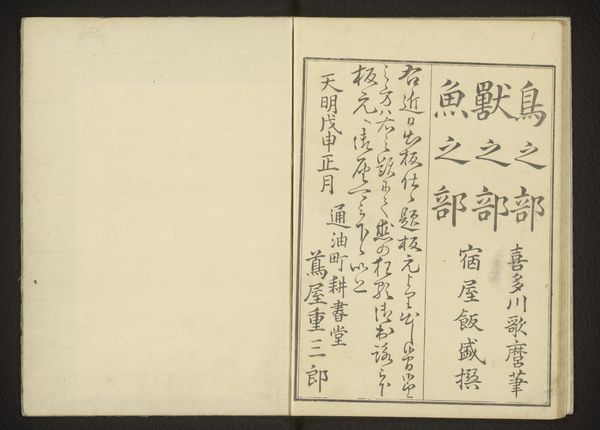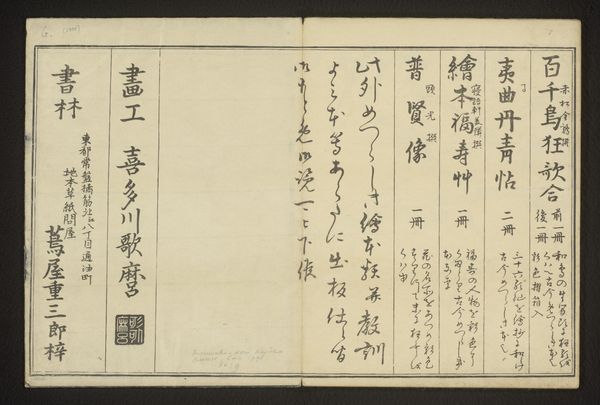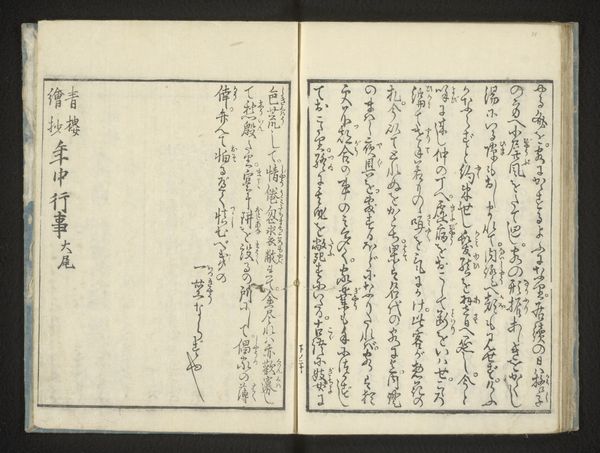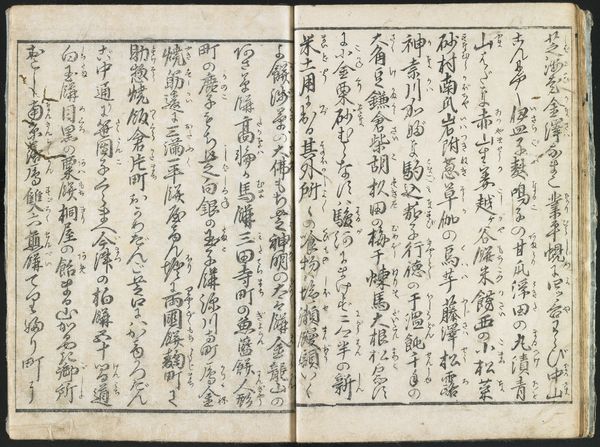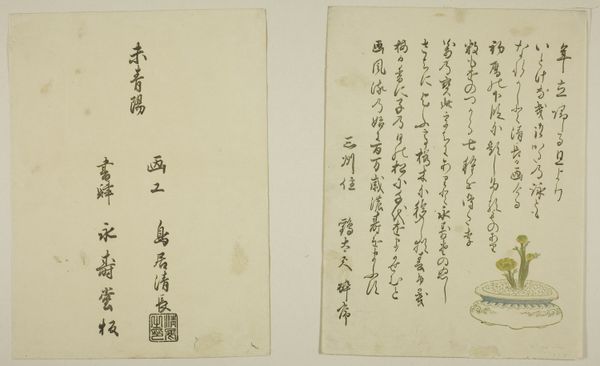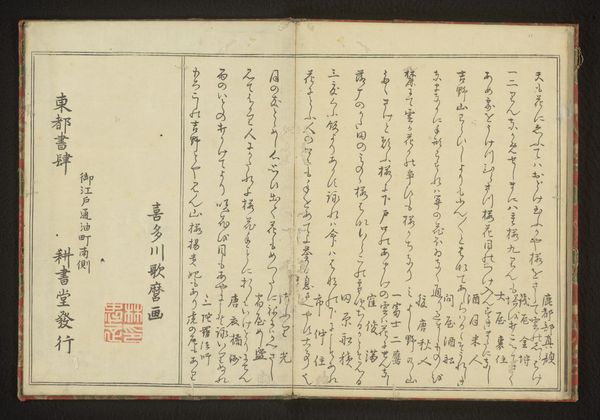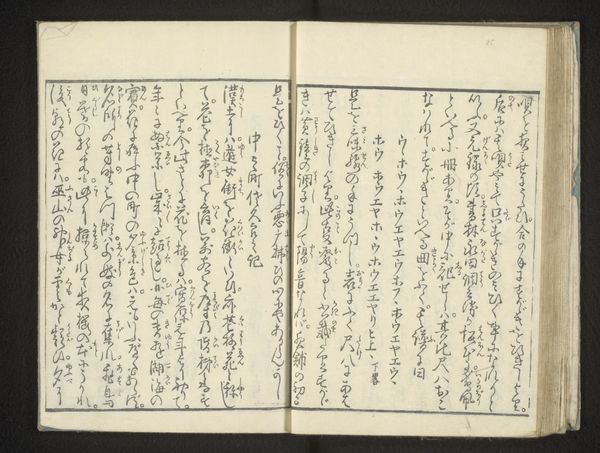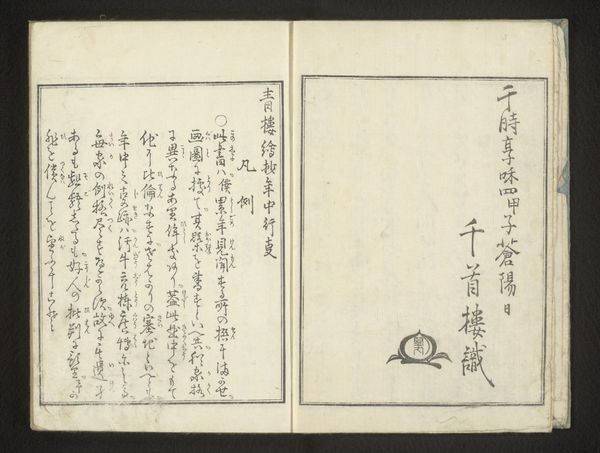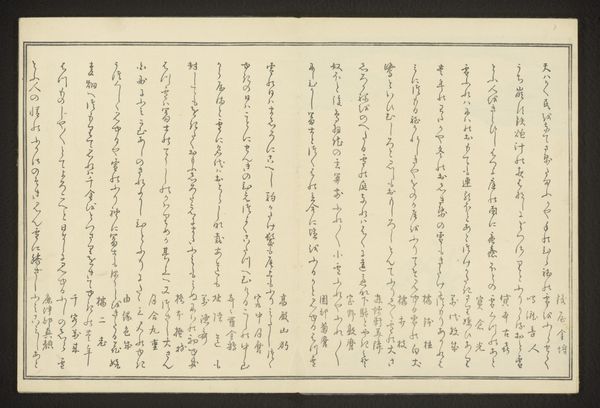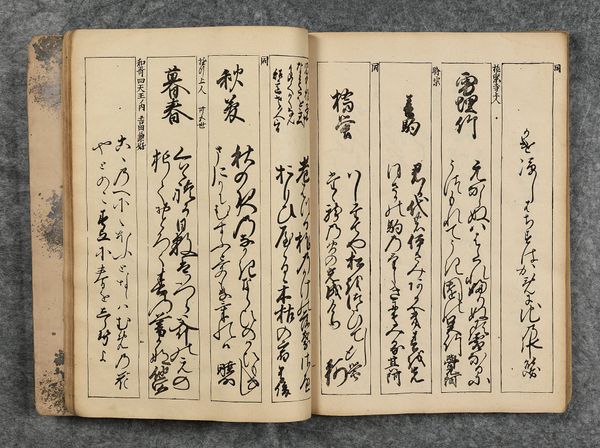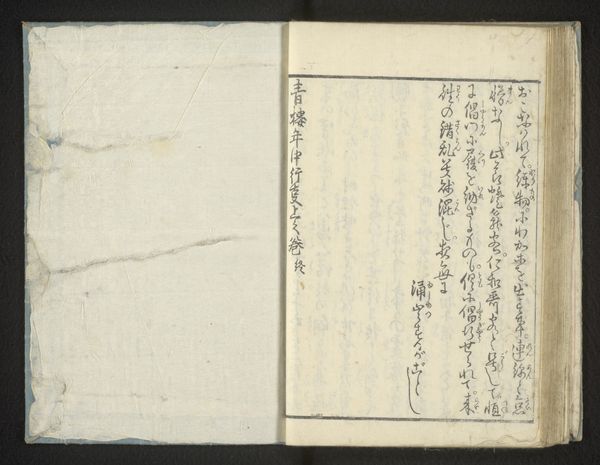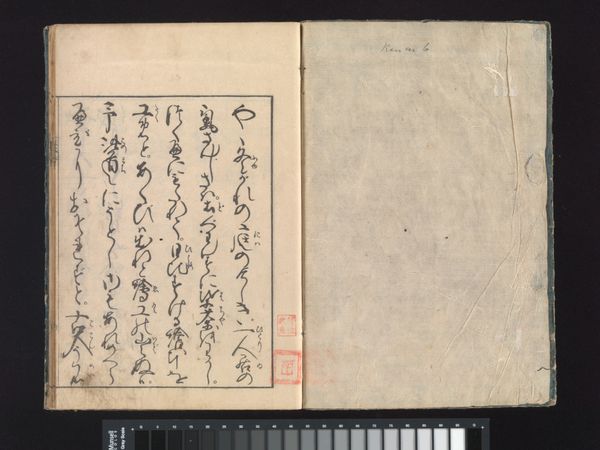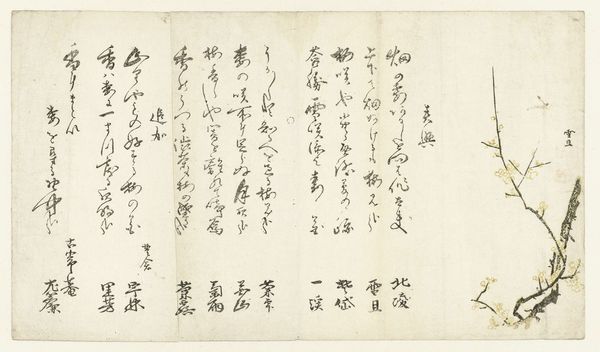
print, paper, ink
#
aged paper
# print
#
asian-art
#
sketch book
#
hand drawn type
#
ukiyo-e
#
paper
#
personal sketchbook
#
ink
#
hand-drawn typeface
#
pen-ink sketch
#
pen work
#
sketchbook drawing
#
storyboard and sketchbook work
#
sketchbook art
Dimensions: height 226 mm, width 158 mm
Copyright: Rijks Museum: Open Domain
Jippensha Ikku created this woodblock print sometime between 1765 and 1831. At its heart, calligraphy is more than mere writing; it is a symbolic dance that resonates deeply across cultures. Calligraphy has often carried a sacred, almost totemic quality, especially where language and text are revered as divine or imbued with spiritual power. Think of the elaborate, illuminated manuscripts of medieval Europe, or the intricately adorned Qurans of the Islamic world. Consider, too, the ways these calligraphic gestures are echoed in dance or ritual—the body itself mirroring the fluid strokes of the brush or pen, embodying the same reverence and intent. This connection is not merely aesthetic; it suggests a deep, subconscious understanding of movement and form. The act of writing or viewing such scripts taps into a shared reservoir of human experience, engaging our senses and emotions. Ultimately, calligraphy demonstrates the enduring power of symbols to transcend time and space. This tradition continues to evolve, revealing the complex interplay between cultural memory and creative expression.
Comments
No comments
Be the first to comment and join the conversation on the ultimate creative platform.
